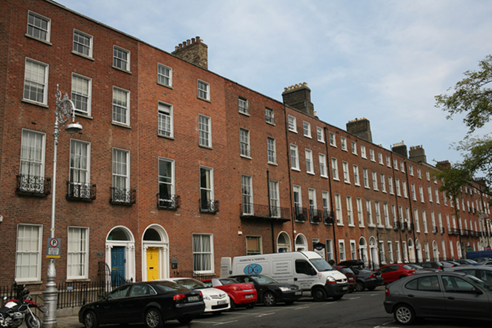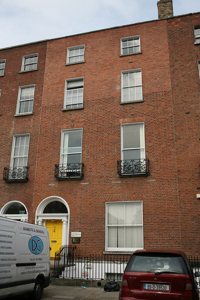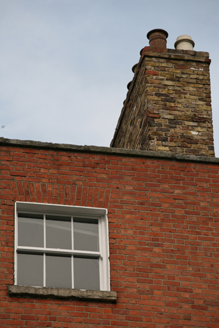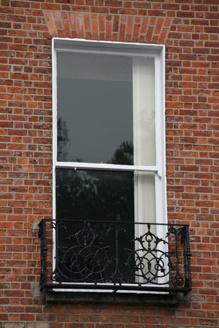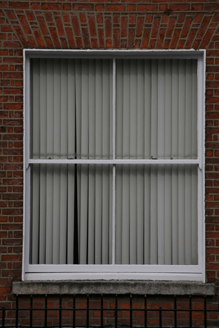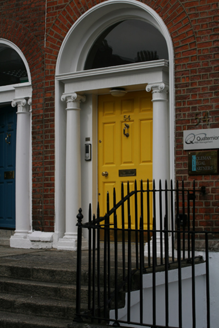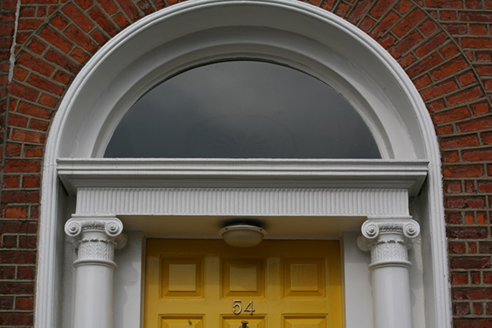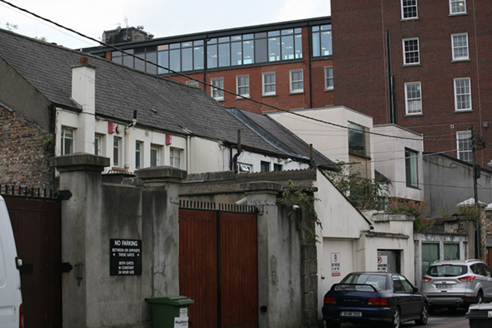Survey Data
Reg No
50930093
Rating
Regional
Categories of Special Interest
Architectural, Artistic
Original Use
House
In Use As
Office
Date
1790 - 1810
Coordinates
316475, 233167
Date Recorded
10/09/2015
Date Updated
--/--/--
Description
Terraced two-bay four-storey over basement former townhouse, built c. 1800, with multi-storey return abutting to rear (north). Now in use as offices. M-profile roof, hipped to west of rear pitch only and set behind parapet wall with granite coping. Replacement yellow brick chimneystacks with lipped clay pots to east party wall. Parapet gutters. Red brick walls laid in Flemish bond with cement pointing, rebuilt to upper two floors. Masonry plinth course over rendered basement wall. Gauged brick square-headed window openings with granite sills and replacement timber sash windows with horns; three-over-three to third floor, six-over-six to second floor, one-over-one to first floor with decorative cast-iron balconettes, two-over-two to ground floor and four-over-four to basement. Gauged brick round-headed door opening with masonry Ionic doorcase comprising; square-headed door opening flanked by Ionic columns supporting fluted lintel entablature with plain glazed fanlight. Original timber panelled door with nine raised-and-fielded panels and brass door furniture opening onto shared granite platform and granite steps to street. Platform and basement enclosed by original wrought- and cast-iron railings set on granite plinth wall. Concrete steps provide access to basement. Forming part of a continuous terrace of former townhouses lining north side of Fitzwilliam Square. Recent brick wall and gate to rear boundary on Pembroke Lane.
Appraisal
The building retains its traditional form and proportions, mellow brick which contrasts with the granite dressings, well executed ironwork, and a handsome Ionic doorcase. It contributes to the historic character of the square and the wider south Georgian core. Laid out in 1791 by the surveyors J & P Roe, Fitzwilliam Square was the last of the city’s Georgian squares to be completed. Development was staggered and progressed slowly until after the Napoleonic Wars.
